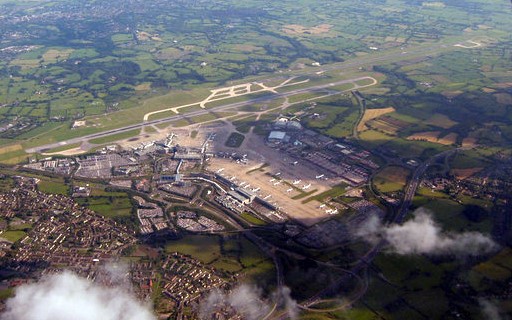 It was recently announced that Budapest had become the first carbon neutral airport in Central & Eastern Europe.There are currently 30 carbon neutral airports in Europe as a whole including Manchester, Gatwick and East Midlands. As well as this, earlier this month FRAPORT reaffirmed their commitment to cutting their CO2 emissions in half by 2030.
It was recently announced that Budapest had become the first carbon neutral airport in Central & Eastern Europe.There are currently 30 carbon neutral airports in Europe as a whole including Manchester, Gatwick and East Midlands. As well as this, earlier this month FRAPORT reaffirmed their commitment to cutting their CO2 emissions in half by 2030.
Carbon neutrality is achieved when the airport absorbs the same amount of carbon dioxide as it produces; a net result of zero over a one-year period.
Airports can reduce their emissions in a number of ways; improving insulation and energy efficiency, using green energy sources, investing in electric vehicle technology, reducing aircraft taxiing times and generally raising awareness amongst staff and passengers.
A couple of good examples include the introduction of a biomass power plant at Paris Carles de Gaulle, Athens International harnessing solar power by investing in a photovoltaic park and Stockholm Arlanda giving priority to hybrid and electric site vehicles.
Another method to achieve neutrality is ‘carbon offsetting’. This is where the airport provides resources to other projects which reduce carbon dioxide in order to offset these against the emissions that they are not able to eliminate at the airport. Whilst not strictly being undertaken to reduce emissions, Dublin Airport now keep bees and produce their own “Nect-Air” honey on site as a testament to their air quality.
 If certain criteria are met the airport can be awarded an Airport Carbon Accreditation. The Accreditation was launched in 2009 following a landmark commitment by ACI EUROPE’s member airports to reduce their carbon emissions and ultimately become carbon neutral. The scheme was subsequently extended to include Asia-Pacific and Africa before going global in 2014. The scheme is currently administrated by WSP on behalf of ACI (Airports Council International).
If certain criteria are met the airport can be awarded an Airport Carbon Accreditation. The Accreditation was launched in 2009 following a landmark commitment by ACI EUROPE’s member airports to reduce their carbon emissions and ultimately become carbon neutral. The scheme was subsequently extended to include Asia-Pacific and Africa before going global in 2014. The scheme is currently administrated by WSP on behalf of ACI (Airports Council International).
To achieve the full Airport Carbon Accreditation, airports must undergo 4 stages of certification; mapping, reduction, optimisation and then eventually, neutrality. There are currently 237 airports in the accreditation programme with 39 (16.5%) of those being fully carbon neutral.
As mentioned above, airports can switch to green energy sources in order to reduce emissions. However, the adoption of alternative green jet fuels for use in the air lags behind the advances being made on the ground. A key initiative is ICAO’s CORSIA (Carbon Offsetting and Reduction Scheme for International Aviation) programme. It is hoped that this will be a key driver to reduce carbon emissions by way of carbon offsetting and stimulation of the alternative fuels industry. Whilst initiatives with similar intent have not fared well, so far international uptake of CORSIA has been encouraging during its voluntary phase, and mandatory participation will start in 2027.
To conclude, the Airport Carbon Accreditation and the efforts of ACI and member airports are an excellent step towards cleaning up the aviation industry and promoting sustainability for the future. We do however feel that much more can be done such as incentives for producers and easier access to capital to develop the use of biofuels and reduce the environmental impact of aircraft emissions around the world.
Back to Latest News